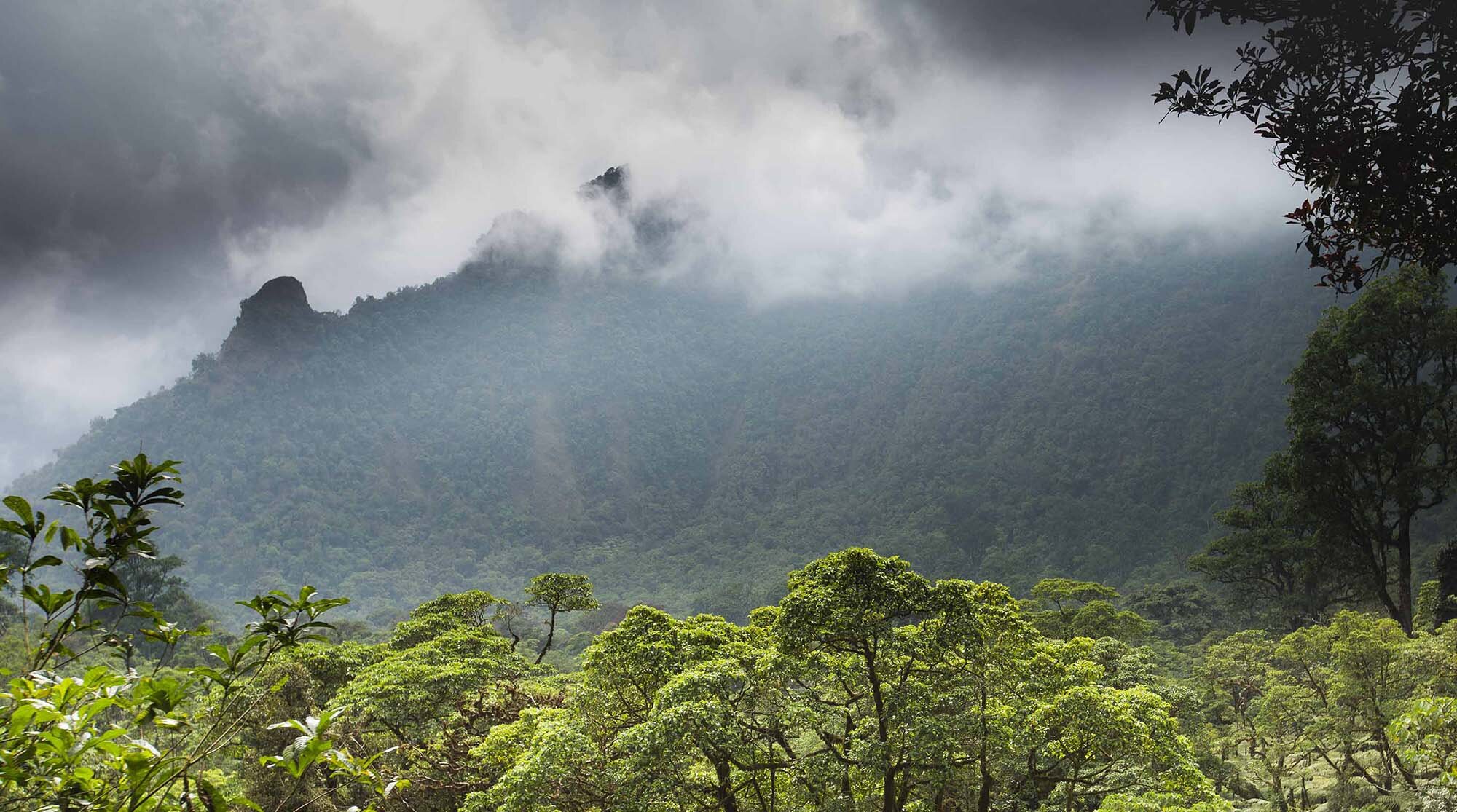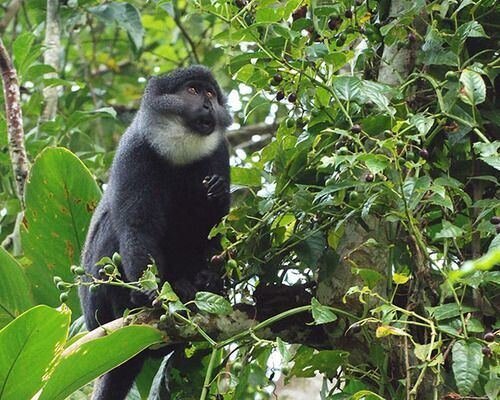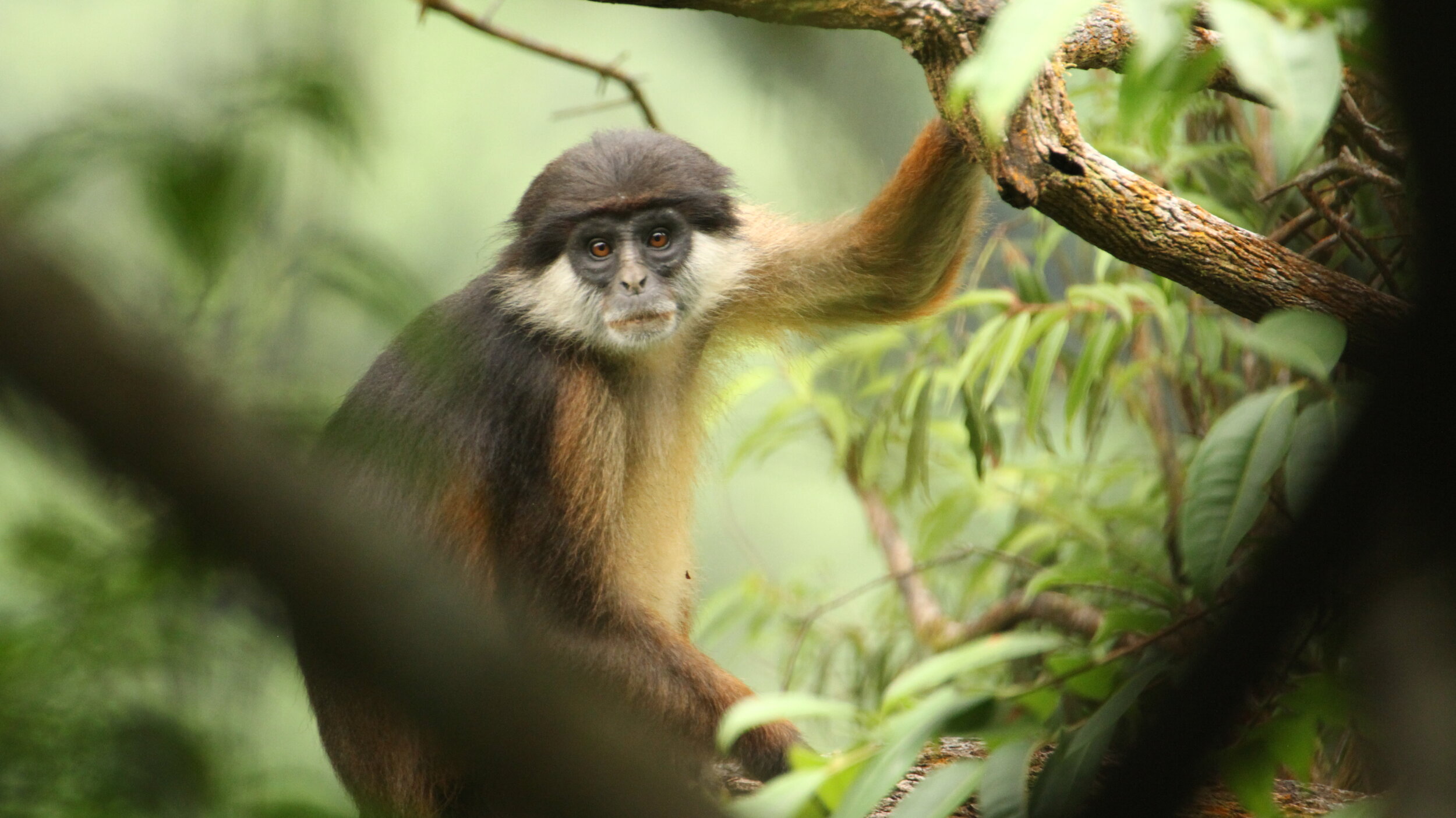
Primates of Bioko
Bioko Island is home to eleven species of primates, making this volcanic island one of the places with the highest density of primates in all of Africa. Nine of these eleven species are represented as subspecies endemic to Bioko with many scientists and conservationists agreeing that it is one of the top priorities for primate conservation in Africa. Yet many are still hunted and sold in the bushmeat markets.
-

BIOKO ISLAND DRILL
Mandrillus leucophaeus poensis
It is endemic to Bioko Island and classified as Endangered (IUCN 2009). Very little is known about them- the dense, primary rainforest in which they live makes it difficult to conduct studies on this secretive and elusive species. There are some estimates as low as 3,000 individuals living in the wild. Bushmeat trade and habitat loss threaten drill populations.
-
PENNANT’S RED COLOBUS
Procolobus pennanti pennati
It is endemic to Bioko Island and classified as Critically Endangered (IUCN 2019). It has the most restricted range of all of Bioko’s eleven species of primates. Recent studies establish that it is only found in an area of approximately 60 km2 of monsoon and montane forests in the southwest in the Gran Caldera Scientific Reserve. There are probably less than 1,200 red colobus remaining on Bioko, with the species estimated to have suffered a >80% decline in numbers between 1986 and 2016.
-

BIOKO BLACK COLOBUS
Colobus satanas satanas
It is endemic to Bioko Island and classified as Critically Endangered (IUCN 2019). They are threatened by habitat loss and hunting. They have the greatest altitudinal distribution of the island's monkeys. This species was observed from 500-2800m and it is reported to occur at all elevations from sea level to the very top of Pico Basilé.
-

GOLDEN CROWNED GUENON
Cercopithecus pogonias pogonias
It is classified as Vulnerable (IUCN 2019). Their populations have declined in the order of 30% over the past three generations, being threatened by illegal hunting and habitat loss. There are probably fewer than 4,500 animals remaining on Bioko.
-

GREATER WHITE-NOSE GUENON
Cercopithecus nictitans martini
It is endemic to Bioko Island and classified as Near Threatened (IUCN 2019). Unfortunately, very few studies have been conducted on this species. In consequence, very little is known about their behavior ecology. On Bioko, its range is limited to approximately 280 km² in one protected area in the south. The Putty-nosed Monkey is threatened by bushmeat hunting and by habitat loss.
-

BIOKO PREUSS’S MONKEY
Allochrocebus preussi insularis
It is endemic to Bioko Island and classified as Critically Endangered (IUCN 2019). It is considered one of the most threatened African primates. The isolation of the population in a small area on high elevations in Basile Peak and habitat loss show to be the major threats of these subspecies. Limited information about Preuss’s monkey biology is available, both of the subspecies of Bioko Island and the one found in the mainland.
-

RED EARED MONKEY
Cercopithecus erythrotis erythrotis
It is endemic to Bioko Island and classified as Vulnerable (IUCN, 2019). There are probably fewer than 9,500 animals remaining on the island. It is threatened by illegal hunting and habitat loss, being the most common species found in bushmeat markets. It shows the greatest range between lowland forest from sea level across high elevations near to Basilé Peak.
-

BIOKO ALLEN’S GALAGO
Sciurocheirus alleni alleni
It is endemic de Bioko Island and classified as Endangered (IUCN 2009). It exhibits nocturnal activity patterns. Although very little is known about this subspecies, but it was seen in primary and secondary forests. Observations were made from 500-2250 m but the species probably has a much greater altitudinal range. Allen’s galago is threatened by habitat loss and degradation.
-
BIOKO NEEDLE CLAW GALAGO
Euoticus pallidus pallidus
It is endemic to Bioko Island and classified as Endangered (IUCN 2009). It is a nocturnal primate. Two subspecies are now recognized. Bioko’s subspecies is threatened by habitat loss.
-
THOMAS’S DWARF GALAGO
Galagoides thomasi
It is classified as Least Concern (IUCN 2019). The species is widespread and relatively common, and there are no major threats believed to be resulting in a major range-wide decline.
-
DEMIDOFF’S DWARF GALAGO
Galagoides demidovii
It is classified as Least Concern (IUCN 2019). Very little is known about them. It is the smallest nocturnal primate of Africa, reaching a maximum of 12,3 cm. the species is widespread and common, present in a number of protected areas throughout the range, and there are no major threats.

